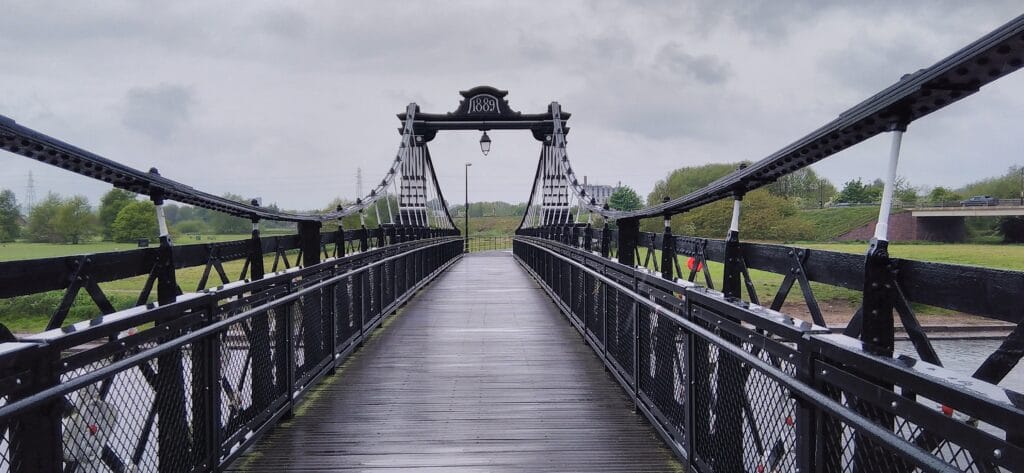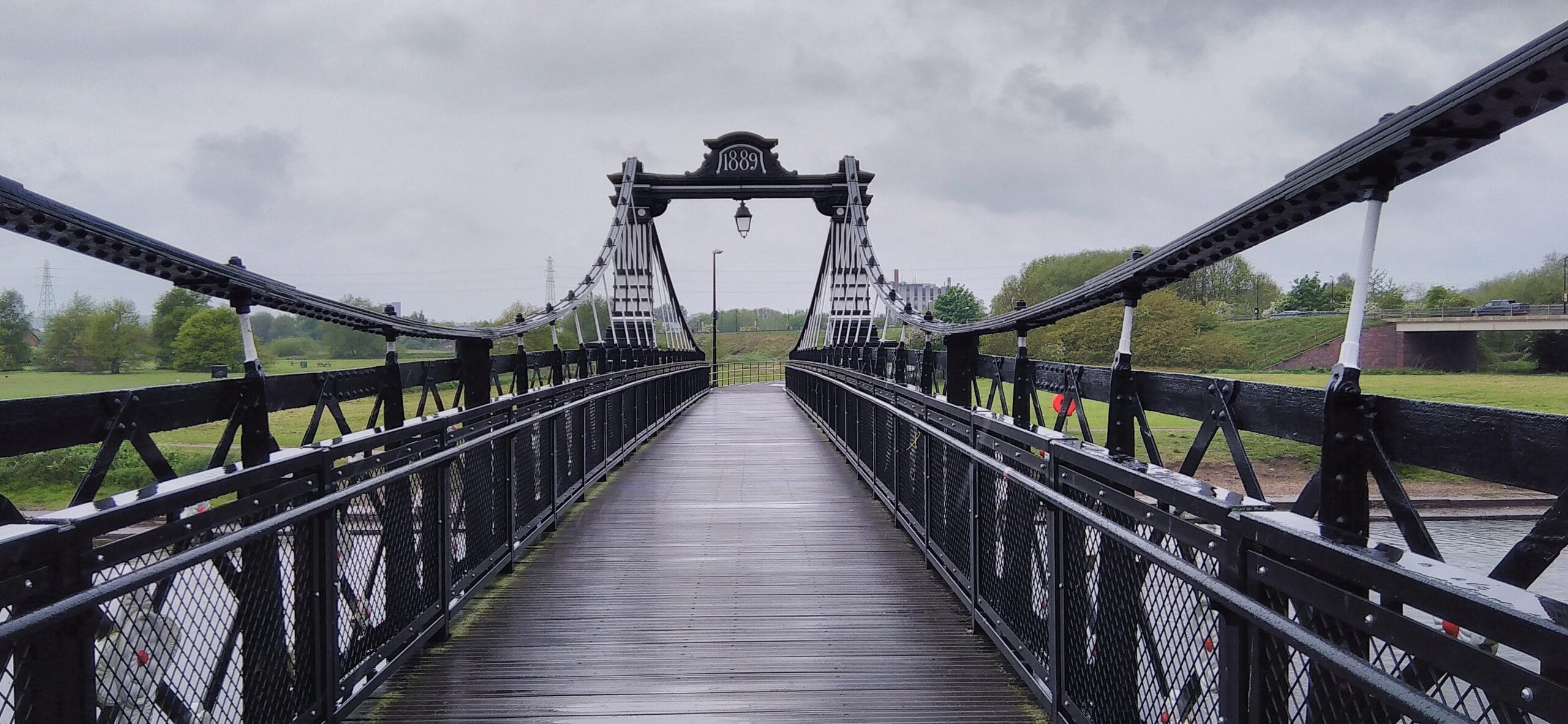EARLY HISTORY (PART I)
BURTON-UPON-TRENT is a parish and market town, known far and wide for its fine ales and most celebrated brands in brewing sphere including Bass, Allsopp, and Worthington. Burton is a classic example of mid 19th century industrial metropolis, well situated along the west bank of the River Trent in East Staffordshire county, west-central England, taking advantage of the rich and fertile valleys of Trent and Dove to further its fortune.
The parish stretches over 7,730 acres (about the area of Chicago O’Hare airport), including the townships of Burton, Burton-extra, parts of Branston, Horninglow, Stretton, Stapenhill and Winshill. The last two named being in Derbyshire on the opposite bank of River Trent. The dense forest of Needwood and ruins of Tutbury castle at a distance to the west are also now part of the suburbs of Burton.
In the northern part of the town, a wide expanse of the river divides into two channels upon which a narrow, 36 arches, stone bridge of over 550 yards is said to have been built by the Romans. The bridge has seen its fair share of battles throughout the history of Burton, serving as the major central crossing of River Trent until the 17th century.

PRE-HISTORIC AGE
It is believed that the Celts started to migrate into central Europe as early as 1200 BC and by 480 BC the tribes controlled most of Britain. Even though there is little evidence available to support the idea of a presence of any settlement in Burton, before the Roman period, a cremation pit has been found in the area dating back to late Neothilic period. More confirmations corresponding to late Bronze Age and early Iron Age have appeared including the discovery of a burial site in the river terrace of Burton and a cremation cemetery south of Stretton Village.
ROMAN PERIOD
Ryknild street (now called Icknield street) is referred to the Roman road that runs south-west to north-east from Fosse way at Bourton-on-water to Templeborough in South Yorkshire. The line of the Roman road passes through the north of River Avon at Bidford and continues to the Roman town at Alcester. Following the route to Weatheroak Hill, it crosses the A4540 road in Birmingham to reach an open countryside of Wall. Leaving here, the Roman road takes a new alignment to Derby, where it carries on through a field, under Birmingham to Lichfield railway. Onwards to Gallow bridge, south of Burton-upon-Trent, the road continues its alignment to pass through the then Roman camps at Branston. The road then randomly ends at Chesterfield near an old Roman fort.
ANGLO-SAXONS
On to the Saxon times, early in the 5th century, after the Romans had withdrawn from Britain to protect their crumbling empire, Burton, and nearby areas, particularly the Tutbury started to gain importance. During this period, this part of the country came under Mercia and in about 666 AD Wulfhere, the King of Mercia, granted Wilfrid, bishop of York, lands in his state to set up monasteries. There was also one established at Burton; an island near River Trent was named Andresey meaning ‘Andrew’s isle,’ dedicated to Saint Andrew.
Burton is a place of great ancientness. The name Burton was coined to mean a settlement of armoury town and supplies of weapons, horses and provisions were stored by the Kings of Mercia there so that they could wage wars to conquer their neighbouring estates.
In 1002, Wulfric Spot, a wealthy Earl of Mercia, thought to be a descendant of King Alfred, founded a Benedictine abbey at Burton. Upon his demise, Wulfric is said to have been buried in the same abbey in a gallery under a stone arch next to the body of his wife. With his death, came a quick succession of unlawful owners of the abbey; finally, being in the possession of Leofric, a possible descendant of Wulfric.
SAINT MODWEN HISTORY
The first religious settlement in Burton area was made by a young Irish abbess in the late 7th century, who came upon River Trent on her way to a pilgrimage in Rome. She was accompanied by two other nuns who helped her lay foundations to the first church of the town, dedicated to St. Andrew at Andresey. She stayed there for seven years where archaeologists have found the remains of her healing well. The water from this well helped the young Alfred the Great in easing his stomach ailment and eventually led to his father, King Ethelred I, agreeing to let Modwen stay in England.
Modwen became the patron saint of the town. Upon her second journey to River Trent, she set up another church on the eastern bank, this time dedicating it to Saint Peter at Stapenhill. She was later called for some missionary work in Scotland where she died in a place called Dundee. A shrine of saint Modwen was built in a chapel of Andresey but after the attacks from Danes, the remains were shifted to Burton abbey which became her final resting place. A monumental church was also erected at the end of the 20th century in Andresey to memorialize Saint Modwen.
In 1114 when Abbot Geoffery took over Burton abbey, he took it upon himself to rebuild the shrine. His fascination with Saint Modwen coerced him into writing a letter to Ireland to know more about the person of such exceptional holiness. Luckily, he was sent a ‘Life of Modwenna’ written by Conchubranus.
Geoffery edited the book and added chapters of her life in Burton which he had heard from his ancestors. There are references in the text pointing to the fact that according to many Irish, Burton was also known as ‘Mudwennestow,’ meaning ‘Modwen’s holy place,’ Miraculously, the book has survived all these centuries and was recently translated by a professor at St. Andrew’s University.
There is more to Burton then its world-famous beer and abundant pubs to drown your sorrows. This boom town might have gained its commemoration globally during the 20th century but there are many hidden historical treasures buried in this traditional part of Britain. And we will be taking you through this journey with us as we unravel some of the most captivating histories of this town and its nearby areas. Stay tuned folks!





